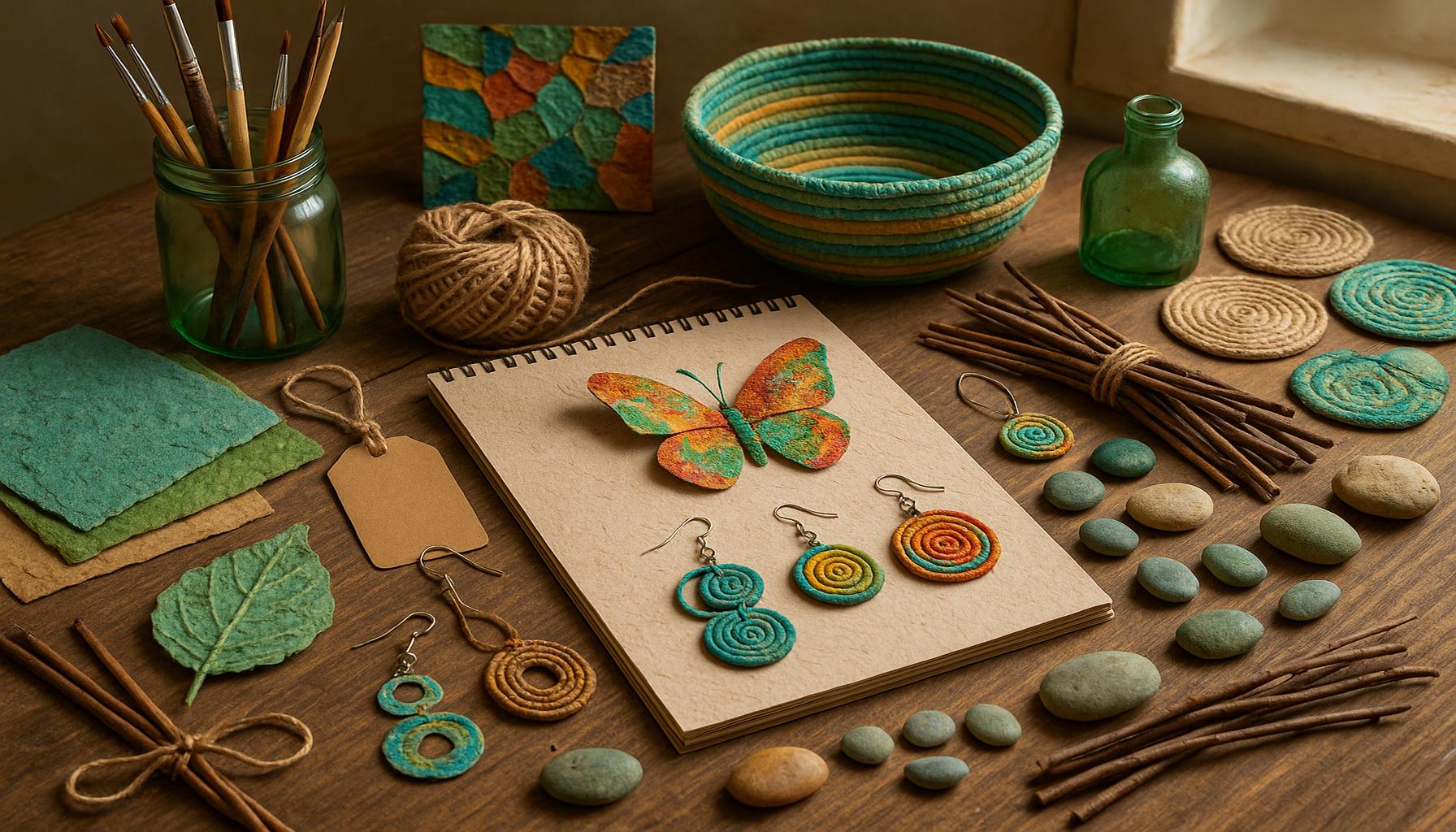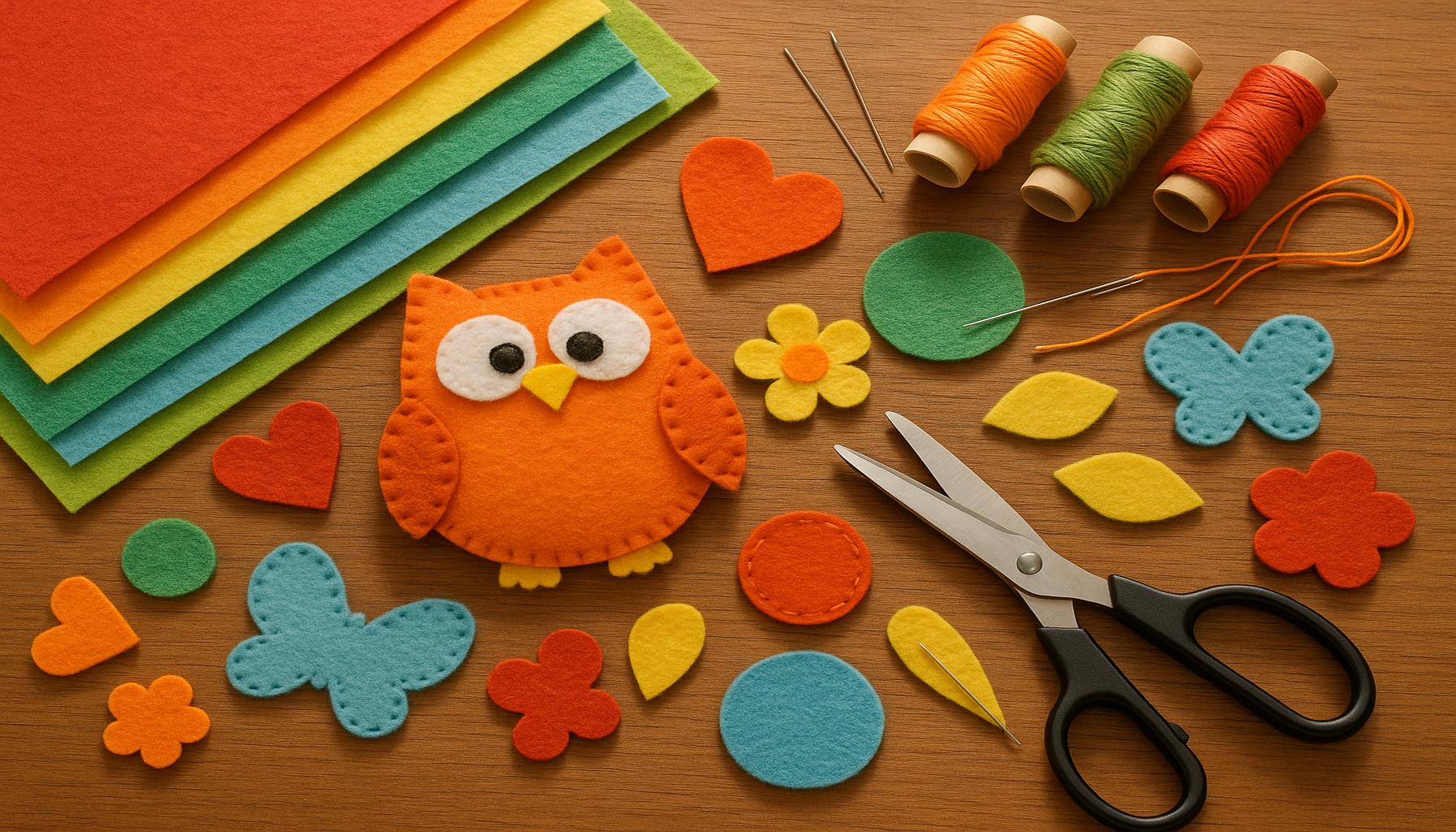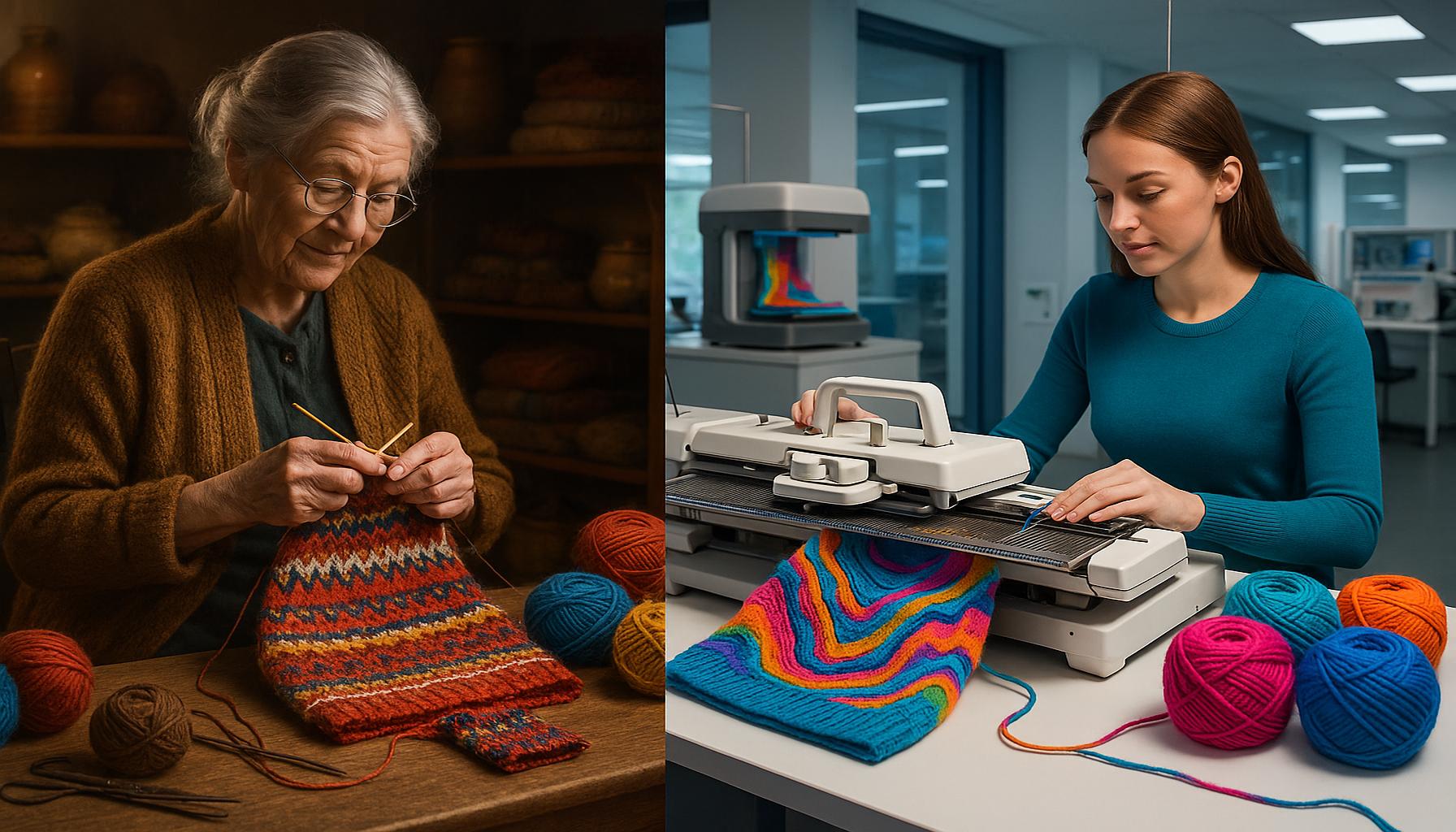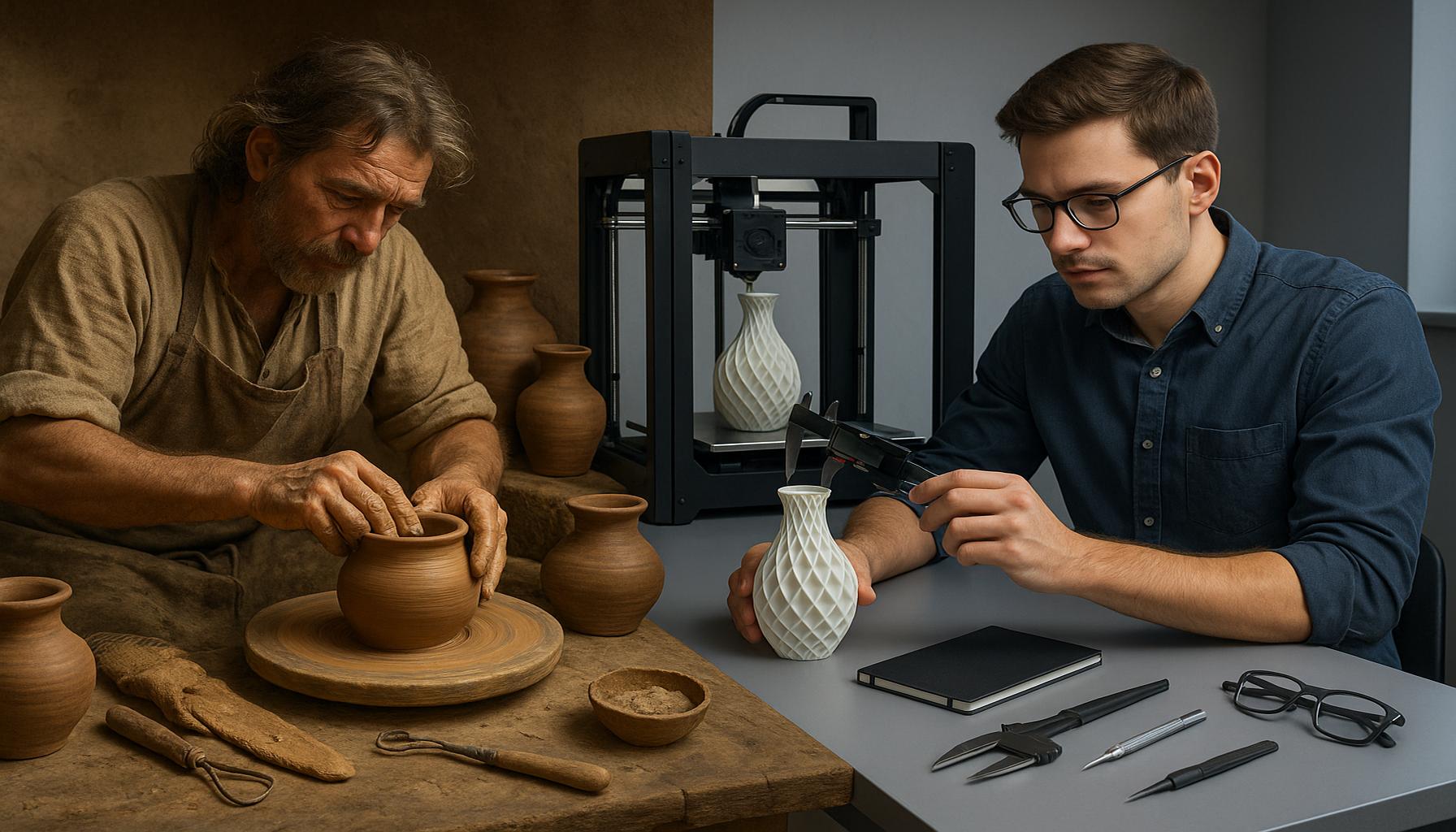Sustainability in Crafting: Creating Beauty with Recycled and Natural Materials

Embracing a Greener Crafting Future
In a world increasingly aware of its environmental footprint, the intersection of art and sustainability offers a refreshing perspective. Crafting, once synonymous with excess and waste, is undergoing a transformative shift. Now, artists and hobbyists alike are embracing the use of recycled and natural materials to create stunning pieces that tell a story.
Benefits of Sustainable Crafting
By prioritizing sustainability, crafting not only promotes creativity but also significantly impacts the environment. Here are some key aspects:
- Reduced Waste: Utilizing discarded materials minimizes landfill contributions. Whether it’s using old newspapers to make unique greeting cards or weaving together fabric scraps into beautiful quilts, every recycled piece contributes to a greener planet.
- Resource Conservation: Natural materials require fewer resources for sourcing compared to synthetic ones. For instance, using locally-sourced wood for furniture projects reduces the carbon footprint associated with transportation and encourages responsible forestry practices.
- Community Support: Local artisans can thrive by using regionally sourced, sustainable materials. This not only enriches the local economy but also encourages community involvement and the preservation of cultural crafts that might otherwise be lost.
The rise of eco-friendly crafting has led to innovative techniques, resulting in unique and beautiful creations. From handmade paper crafted from junk mail to jewelry made from reclaimed wood, the options are limitless. Artists have begun to utilize found objects, transforming discarded items into art pieces that challenge perceptions of beauty and utility. This trend not only highlights creativity but also champions the importance of mindful consumption, urging crafters to reflect on where their materials come from and the lifecycle of their creations.
Explore the Possibilities
As we delve into the colorful world of sustainable crafting, expect to discover new methods, inspiration, and essential tips. Workshops and community events across the United States, such as upcycling fairs or eco-crafting classes, provide platforms for enthusiasts to learn new skills and share their creations. It’s time to rethink not just the materials we use, but the very essence of crafting itself. For those inspired to begin their journey, consider engaging with local resources like thrift stores or craft supply exchanges, where you can find hidden treasures waiting to be transformed into art. By embracing sustainable practices, crafters can ensure that their passion not only fuels their creativity but also contributes to a healthier planet.
DISCOVER: Click here to learn about photography as a tool for emotional well-being

Rethinking Crafting Through Sustainability
As the crafting community shifts towards sustainability, it’s essential to examine how recycled and natural materials can redefine the way we create. By adopting eco-friendly practices, crafters not only reduce their environmental impact but also unlock a new realm of creativity. Artists are increasingly finding inspiration in the overlooked and discarded, turning everyday waste into functional and aesthetically pleasing art.
Transforming Waste into Wonder
The art of upcycling takes center stage in sustainable crafting. This innovative approach involves reimagining the purpose of materials that might otherwise be deemed unusable. Common household items can be transformed into remarkable creations, leading to both environmental and personal rewards. Here are a few popular examples of upcycling:
- Glass Bottles: After washing and removing labels, glass bottles can be repurposed into stunning vases or candle holders, adding a unique touch to home decor.
- Cardboard Boxes: Whether it’s a decorative storage solution or playful children’s toys, cardboard can be cut and reconstructed to serve new and imaginative functions.
- Old Clothes: Fashion waste can be given a second life through creative sewing projects, such as tote bags or patchwork quilts that add character to any space.
The versatility of these materials goes beyond mere aesthetics. By incorporating them into crafting projects, artisans and hobbyists play a pivotal role in raising awareness about the issues surrounding waste and resource depletions. The act of transforming these items fosters a sense of appreciation for their original use, while also highlighting the environmental advantages of reducing our reliance on new materials.
The Role of Natural Materials
In addition to recycled items, natural materials are becoming increasingly popular in sustainable crafting. Crafting with organic resources not only contributes to a greener planet but also promotes health and well-being. Natural materials such as bamboo, jute, and cotton are biodegradable and renewable, making them ideal choices for conscientious creators. For instance:
- Bamboo: This rapid-growing plant offers an excellent alternative to plastic, with uses ranging from furniture to eco-friendly utensils.
- Jute: Known for its durability and biodegradable nature, jute is often used for bags, rugs, and eco-friendly packaging.
- Cotton: Natural cotton, especially when sourced from organic farmers, provides a breathable fabric for everything from clothing to home textiles.
When crafting with these materials, crafters often emphasize the important connection between humanity and the earth. With every project, they weave a narrative that champions sustainability while simultaneously creating items that enrich their lives and the environment. By prioritizing natural materials, these artists not only contribute to a reduction in synthetic waste but also encourage others to make more mindful choices in their crafting journeys.
| Advantage | Description |
|---|---|
| Reduced Environmental Impact | Utilizing recycled materials decreases waste and conserves natural resources, significantly lowering the carbon footprint of crafted products. |
| Unique Aesthetic Appeal | Crafts made from natural and recycled materials offer one-of-a-kind designs and textures, attracting consumers seeking distinctiveness in their home decor. |
| Cultural Preservation | Supporting artisans who use traditional methods with sustainable materials helps maintain cultural heritage while promoting environmental stewardship. |
| Positive Community Impact | Engaging local communities in crafting promotes economic stability, job creation, and environmental consciousness. |
Exploring these advantages of sustainability in crafting not only highlights the benefits of using recycled and natural materials but also illustrates how such practices pave the way for a more environmentally friendly future. The art of creating beauty through responsible means encourages consumers to make informed choices, supporting a movement that champions not just aesthetic appeal, but a deeper connection with our planet and communities. Whether one is a seasoned crafter or a potential buyer, understanding these elements enhances appreciation for the intricate relationship between artistry and sustainability.
DISCOVER MORE: Click here to unleash your creativity
Embracing Local and Organic: The Supply Chain of Sustainability
As the crafting landscape evolves, sourcing materials responsibly has become paramount. Crafting sustainably goes hand in hand with supporting local economies and reducing the carbon footprint associated with transporting materials across long distances. By prioritizing local suppliers, crafters can ensure that their projects not only promote eco-friendliness, but also enhance community well-being.
Local Sourcing: A Quintessential Priorty
When artists choose to source materials locally, they significantly minimize the environmental impacts caused by transportation. Local artisans often harness natural resources that are abundant in their surroundings, reinforcing the principle of sustainability. For example, artisans in California can use locally grown cotton, while those in the Pacific Northwest might incorporate native woods like cedar and redwood into their pieces. Beyond ecological benefits, local sourcing fosters community ties and supports regional craftsmanship, creating a ripple effect of positive economic impact.
The Importance of Organic Materials
Another critical aspect of sustainable crafting is the utilization of organic materials. Organic cotton, for instance, is cultivated without the use of synthetic fertilizers or pesticides, which not only benefits the environment but also the health of those who work with the fabric. In recent years, the popularity of organic materials has surged, leading to increased availability. According to the Organic Trade Association, U.S. sales of organic products reached a staggering $62 billion in 2020, reflecting a growing desire for goods that are both eco-conscious and healthy.
- Wool: Sourced from sheep, wool is naturally biodegradable and offers thermal insulation and durability. Crafters use it for everything from knitting and felting to weaving, making it a versatile choice.
- Hemp: This fast-growing plant requires minimal water and no pesticides, making it a powerhouse of sustainability. Hemp fibers can be woven into textiles or used to create eco-friendly ropes and paper products.
- Reclaimed Wood: Salvaging and repurposing wood from old buildings or furniture not only prevents deforestation but also tells a story of its past, adding unique character to every crafting project.
The shift to organic and locally sourced materials resonates with consumers who are increasingly scrutinizing the origins of their purchases. A survey conducted by the National Retail Federation revealed that over 60% of consumers prefer brands that demonstrate a commitment to sustainability. This trend has propelled many crafters to foreground ethical practices, emphasizing transparency in their crafting processes.
Community Engagement and Workshops
Furthermore, fostering a communal approach to sustainable crafting can lead to increased awareness and education. Craft workshops focused on upcycling and using natural materials empower participants to embrace eco-friendly practices. In cities across the U.S., community centers and local artisans host classes that teach practical skills, from sewing with organic fabrics to woodworking with sourced timber. These engagements bring together diverse demographics of crafters, reigniting a collective passion for sustainability and innovation. Events like craft fairs and eco-markets also further promote sustainable brands and provide platforms for artisans to showcase their eco-conscious creations.
As crafting evolves, the journey toward sustainability offers limitless potential for new ideas and fresh perspectives. By embracing local and organic materials, artists and hobbyists can create beautiful items that contribute positively to the world around them.
DISCOVER MORE: Click here to dive deeper
Conclusion: Crafting a Sustainable Future
As we reflect on the vital connection between sustainability and crafting, it becomes evident that artists and crafters play a crucial role in shaping a more eco-conscious future. The use of recycled and natural materials not only fosters creativity but also promotes an environmentally friendly approach that benefits our planet and communities. By tapping into local resources and opting for organic options, crafters can minimize their ecological footprint while infusing their work with unique stories and cultural significance.
Furthermore, the growing interest in community engagement and workshops ensures that sustainable practices are shared and celebrated, inspiring new generations of makers. The trend towards ethical crafting aligns perfectly with consumer demand for transparency and responsibility, making sustainability not just a choice but a necessity in the modern crafting landscape.
In conclusion, sustainability in crafting is a multi-faceted journey that opens doors to endless possibilities. By prioritizing recycled and natural materials, crafters can create beauty that resonates with mindful consumers, ultimately leading to a more connected community and a healthier environment. Whether you’re a seasoned artisan or a novice enthusiast, embracing these sustainable practices will not only enrich your craft but also contribute positively to the world around you. Let us continue to innovate and inspire, weaving sustainability into the very fabric of our crafting lives.



